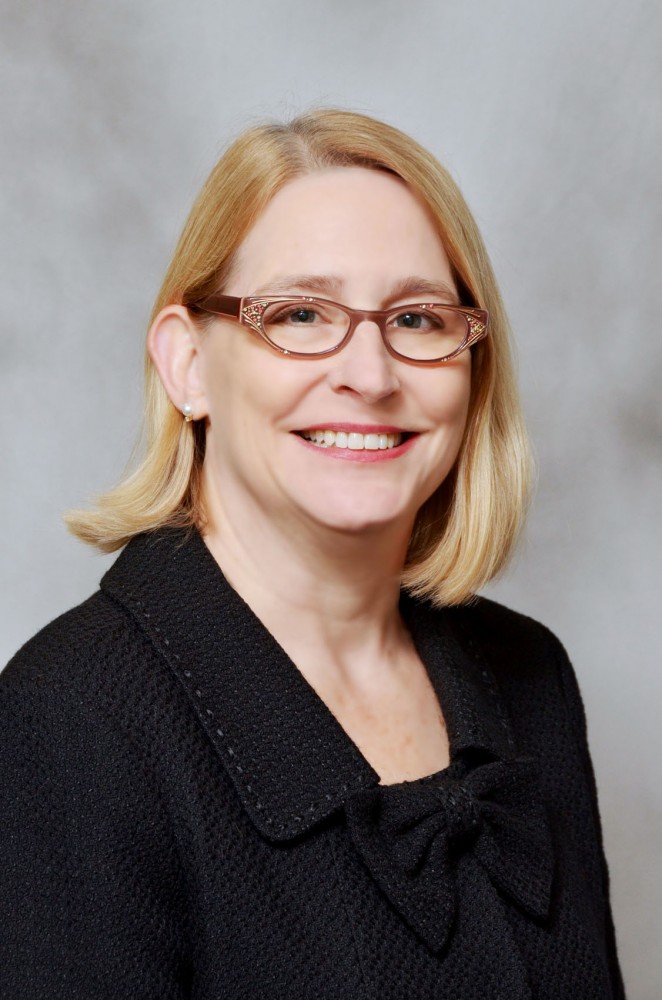When Dr. Elizabeth Seaquist begins her research with a question, she knows her team may be working for decades to answer it.
The American Diabetes Association recognized the University of Minnesota professor and endocrinologist for her years of research earlier this month when it named her its president of medicine and science.
Seaquist, known to friends as Betsy, has come a long way from her “Minnesota nice” childhood, when she read books about nurses and dreamed of being the doctor.
Throughout her life, she knew she wanted to work with medicine. In college, Seaquist considered becoming a special education teacher, but eventually landed at the University’s Medical School, where she fulfilled her degree and has stayed ever since.
“Medicine has always made sense to me,” Seaquist said. “I love the science part, and putting it in a human context is really interesting.”
When receiving her doctorate in endocrinology, Seaquist recognized that the field could improve how insulin affects diabetic patients. Medical professionals knew that it mattered to control blood sugar and that people needed to take medicine to do so, but the experts didn’t know how important it was to control blood sugar in order to avoid complications like blindness or kidney failure.
So, Seaquist began what would be decades of research and international collaboration to address the joint mission of improving the quality of life for those with diabetes and understanding the specific effects of the disease.
Her efforts through the years resulted in several honors and awards.
“She’s grown up a great deal,” said Seaquist’s primary mentor, University professor of medicine and previous president of medicine and science for the ADA, Dr. Paul Robertson. Robertson trained Seaquist in research in his laboratory beginning in the late 1980s, working on transplanting pancreatic islets, which contain cells that make insulin.
“When she was younger, she thought of a research problem and a topic, and now she’s still working on it over 20 years later,” Robertson said. “It’s important to hire people who are dedicated and people who care for these types of research.”
Roadblocks to research
Balancing a personal life and her career was one of her biggest challenges, Seaquist said. But being able to share things with her husband, who is a lawyer, and raising two children made it easier.
Seaquist’s family was supportive of her career, but sometimes showed it in atypical ways. For instance, Seaquist’s son George Fiddler remembers her appearing on a local health talk show from time to time when he was younger. When she would get home, he said, the whole family would poke fun at her performance, her outfit or say how boring it was, but she was always a good sport and was just happy they had watched.
Fiddler said he remembers her efforts to balance work and family growing up.
“I recall her trying to include me in the work somehow,” he said, “like having me pretend to be her audience as she prepared for a lecture.”
Another challenge Seaquist encountered in her career was learning how to be flexible in what she researched, because even if she was interested in answering a question, the public may not be. In order to keep getting research funding, Seaquist would often need to listen to what colleagues in her field were doing and work with them.
Seaquist makes it a priority to involve contribution from all members of her research staff, said Anjali Kumar, a physician assistant who has worked in clinics and research labs with Seaquist since 2002. Every Tuesday for one hour, she said, their research team has “diabetes team care,” where the team discusses different patients and considers all perspectives.
“I love our division,” Seaquist said. “We’re really collegial, we work well together, we have a common purpose in terms, we think as a group and we tackle the same problems.”
The problem that the team is currently tackling — through a $254,511 federal grant — is finding a combination of medicine that best treats Type II diabetes.
But the team is greatly lacking in patients with Type II diabetes, even though patients in the study get free medicine for seven years.
“To get people to answer the question, we need to have patients,” she said. “I know they’re out there — we just have to find them.”
Seaquist is also working with the University’s Center for Magnetic Resonance Research to uncover how glucose levels in diabetic patients might cause abnormalities in the brain.
With her new position in the ADA, Seaquist said she hopes to reassess how well the organization is addressing its mission. She said she hopes to maintain the ADA’s trust and competitive standing for the future.
“I think research will lead to transformational change and hopefully we will not have diabetes and I can retire,” she said. “I really believe in the breadth of the organization and that the research is so important, but the mission is to improve the lives of all people with diabetes, and that’s a big mission.”


